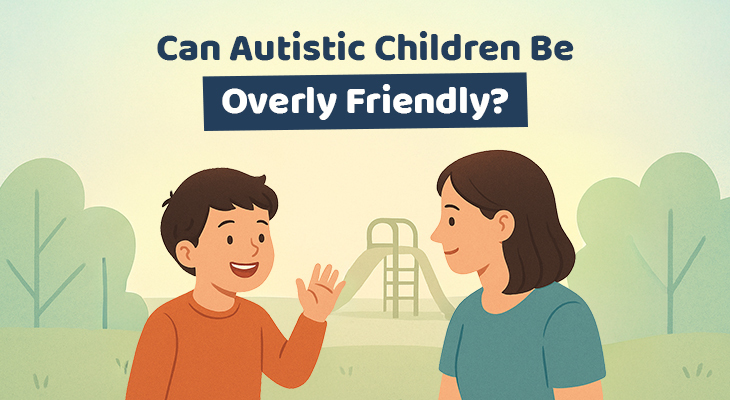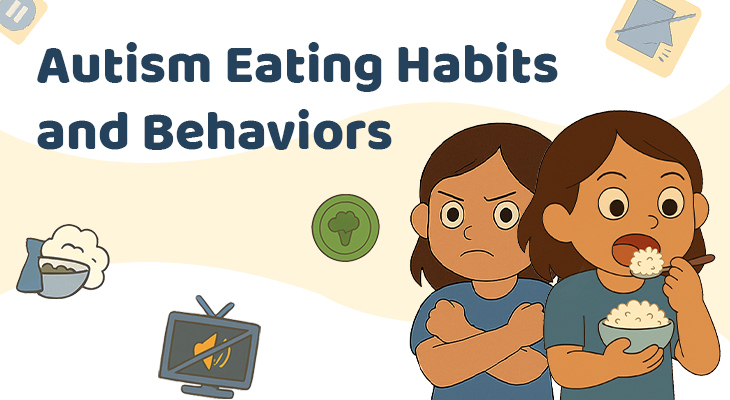Olivia and Ethan are two small children who love Halloween. While Olivia loves the bright and colorful costumes, Ethan loves the candy.
Last year, when Ethan went trick-or-treating, he found the loud noises and bright lights overwhelming. He also had a bit of an issue with brightly colored costumes that were too much for his eyes. Olivia, on the other hand, didn’t have any problems with the sensory aspects of Halloween, but she found the social interactions very overwhelming. She also had challenges responding, like saying thank you, during trick-or-treats.
Halloween is a fun night for most children, but it can be overwhelming for those with autism. Olivia and Ethan’s experiences demonstrate the challenges that autistic kids face during Halloween celebrations. Scary sounds and decorations, tight or scratchy costumes, and going out at night can be difficult to handle. Since every autistic individual is unique, the challenges each of them face can also be quite unique. However, there are some common ways in which Halloween celebrations can be adjusted to make them more enjoyable for autistic children. This blog post discusses tips for parents, autistic people, and others on how to make Halloween more enjoyable for everyone.
Tips for parents to create a memorable Halloween
Parents play a vital role in making Halloween enjoyable for their autistic children. By understanding their child’s needs and taking steps to accommodate them, parents can help their children to have a positive and memorable Halloween experience. Here are some specific steps parents can take:
- Use a visual story to help your child learn what to expect around Halloween. We have created a fun story, and you can use that:

Download Download & share this infograph in your network [Free Download]
- Plan ahead. Talk to your child about what they want to do on Halloween and what they might find challenging.
- Focus on the positive. Talk about the things that your child is looking forward to on Halloween, such as seeing their friends in their costumes or getting candy.
- Create a safe space. Have a place where your child can go if they need to take a break from the festivities.
- Bring along a comfort item, such as a stuffed animal or blanket. This can help your child feel more comfortable and secure.
- Be flexible. If your child needs to take a break, change plans, or leave early, be accommodating.
- Be supportive. Let your child know that you are there for them and that you will help them to have a fun and enjoyable Halloween.
Mindsets on Halloween that autistic kids can benefit from
Autistic kids can be encouraged to develop positive mindsets about Halloween. Here are five mindsets on Halloween that autistic kids can benefit from:
- It’s okay to be different. Autistic kids may not enjoy all of the same Halloween activities as other kids. That’s perfectly okay! It’s important to find activities that you enjoy and that make you feel comfortable.
- You don’t have to do anything you don’t want to do. You don’t have to dress up in a costume, go trick-or-treating, or attend a party if you don’t want to. It’s okay to say no.
- It’s okay to take breaks. If you start to feel overwhelmed, take a break from the festivities. Find a quiet place to sit and relax until you feel better.
- You have the right to ask for help. If you need help with anything, don’t be afraid to ask a trusted friend, family member, or adult.
- Halloween is all about having fun. Make sure to do the things that you enjoy and that make you happy.

Autistic kids can enjoy Halloween too! Here are 5 mindsets to help them:
- It’s okay to be different.
- You don’t have to do anything you don’t want to.
- It’s okay to take breaks.
- You have the right to ask for help.
- Halloween is all about having fun.
- Do what you love and be yourself!
#Halloween #AutismAwareness #InclusionForAll
Making Halloween More Enjoyable: What Others Can Do?
It is everybody’s responsibility to create a safe and inclusive environment for autistic kids on Halloween. With a little effort, we can all help them have a fun and memorable experience. Here are some tips for what others can do to make Halloween more enjoyable for autistic kids:
- Put up a blue bucket. This is a signal to trick-or-treaters that you are familiar with autism and that you have taken steps to make your home more welcoming.
- Keep your decorations simple. Avoid decorations with flashing lights or loud noises.
- Turn on your porch light. This will make it easier for children to see your house and to feel safe approaching it.
- Keep non-allergic candies. This way, every child can enjoy the fun and excitement of trick-or-treating. Display a teal pumpkin on your doorstep to let trick-or-treaters know that you have allergy-friendly treats available. If a child is carrying a teal bucket, please only give them allergy-free treats.[1]
- Hand out non-food treats. Some autistic children may have food allergies or sensitivities. Consider handing out non-food treats, such as glow sticks, stickers, or pencils.
- Provide a quiet space. If you have a quiet porch or driveway, let autistic children and their families know that they are welcome to use it as a break spot.
- Be patient. It may take autistic children longer to approach your door and to collect their candy. Be patient and understanding.
- Don’t frown upon. Autistic kids may have difficulty with Halloween traditions, such as saying “trick or treat,” choosing a candy, or waiting in line. They may also grab more than one candy, even when told not to. These are not bad manners, but symptoms of their autism. Please be patient and understanding.

This Halloween, let’s all work together to make it a fun and inclusive experience for autistic kids. Here are some tips for what others can do:
- Put up a blue bucket to show you’re autism-friendly
- Keep your decorations simple and avoid flashing lights or loud noises
- Turn on your porch light and hand out non-food treats
- Provide a quiet space for kids to take a break
- Be patient and understanding
#Halloween #AutismAwareness #InclusionForAll
Conclusion
By working together, we can all help to ensure that autistic people have a safe and enjoyable Halloween. Let’s all make Halloween a fun and inclusive experience for everyone!
We hope this blog post has been helpful. Please share it with your friends and family to help spread awareness about how to make Halloween more enjoyable for autistic people.
For information on autism monitoring, screening and testing please read our blog.




